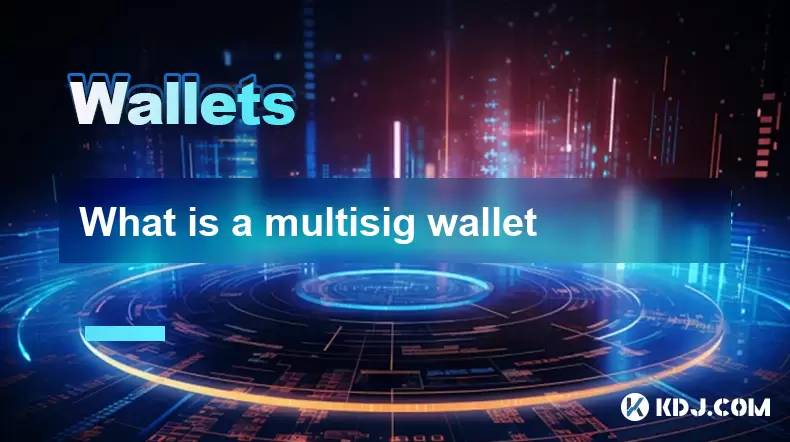-
 Bitcoin
Bitcoin $118,209.3536
1.16% -
 Ethereum
Ethereum $3,151.7546
5.98% -
 XRP
XRP $2.9277
2.35% -
 Tether USDt
Tether USDt $1.0000
0.00% -
 BNB
BNB $689.7099
1.26% -
 Solana
Solana $163.4270
1.91% -
 USDC
USDC $1.0000
0.02% -
 Dogecoin
Dogecoin $0.1983
3.74% -
 TRON
TRON $0.3008
0.51% -
 Cardano
Cardano $0.7435
2.86% -
 Hyperliquid
Hyperliquid $47.6547
-0.48% -
 Stellar
Stellar $0.4625
2.79% -
 Sui
Sui $3.9921
2.71% -
 Chainlink
Chainlink $16.0608
4.23% -
 Hedera
Hedera $0.2348
1.56% -
 Bitcoin Cash
Bitcoin Cash $496.6985
1.25% -
 Avalanche
Avalanche $21.9038
5.41% -
 UNUS SED LEO
UNUS SED LEO $8.8356
-1.88% -
 Shiba Inu
Shiba Inu $0.0...01364
5.31% -
 Toncoin
Toncoin $3.1102
4.35% -
 Litecoin
Litecoin $95.9756
3.59% -
 Polkadot
Polkadot $4.0925
5.78% -
 Monero
Monero $333.7622
-1.44% -
 Uniswap
Uniswap $9.1968
2.25% -
 Bitget Token
Bitget Token $4.6378
6.23% -
 Pepe
Pepe $0.0...01282
6.77% -
 Dai
Dai $1.0002
0.03% -
 Ethena USDe
Ethena USDe $1.0005
0.00% -
 Aave
Aave $329.9143
4.49% -
 Bittensor
Bittensor $441.4995
6.89%
What happens if I lose my Ledger?
If you lose your Ledger wallet, you can recover funds using the 24-word recovery phrase on a new device or compatible wallet.
Jul 11, 2025 at 09:29 am

What happens if I lose my Ledger?
Losing your Ledger hardware wallet can be a stressful experience, especially if you're not prepared. However, understanding what steps to take and how to recover your funds is crucial in ensuring that your cryptocurrencies remain safe and accessible.
Understanding the Recovery Mechanism
When you first set up your Ledger device, you are provided with a recovery phrase, typically consisting of 24 words. This phrase acts as a backup for your wallet and allows you to restore access to your funds even if the physical device is lost, stolen, or damaged.
The recovery process relies on this mnemonic phrase being stored securely offline. If you followed best practices and wrote down your recovery phrase in a secure location, you can use it to regain control of your assets. Without this phrase, however, recovering your funds becomes nearly impossible.
It's important to note that the recovery phrase should never be shared or stored digitally unless using a trusted encrypted method. The security of your cryptocurrency depends heavily on safeguarding this information.
Steps to Recover Your Funds
If you’ve misplaced your Ledger wallet but still have your recovery phrase, you can follow these steps to regain access to your funds:
- Obtain a new Ledger device or use another compatible hardware wallet.
- During setup, choose the option to restore an existing wallet instead of creating a new one.
- Carefully enter your 24-word recovery phrase when prompted.
- Confirm that the phrase has been entered correctly by selecting the words in the correct order (if required).
- Once verified, your wallet will begin syncing with the blockchain and restoring your balances.
This process ensures that your private keys — which are derived from the recovery phrase — are re-established on the new device. All addresses and transaction history associated with your previous wallet will be available again.
What If You Lose Both the Ledger and the Recovery Phrase?
Unfortunately, if both your Ledger device and your recovery phrase are lost, there is no way to recover your funds. Unlike traditional banking systems, cryptocurrency transactions are irreversible and decentralized, meaning there’s no central authority to appeal to or reset passwords for.
In such a scenario, the funds tied to that wallet become permanently inaccessible. This underscores the importance of securely storing your recovery phrase in multiple safe locations and possibly using additional tools like metal backup solutions to ensure longevity and protection against physical damage.
Never rely solely on digital copies, as they can be vulnerable to hacking or data corruption.
Can Someone Else Access My Funds If They Find My Ledger?
A common concern among users is whether someone who finds their lost Ledger wallet can access their funds. The good news is that without the PIN code and the recovery phrase, it's extremely difficult for anyone to gain access to your assets.
Each Ledger device requires a PIN code to unlock it. After several incorrect attempts, the device will self-lock, preventing brute-force attacks. Additionally, since the recovery phrase is not stored on the device itself, even if someone gets hold of your Ledger, they cannot restore your wallet elsewhere without the recovery phrase.
However, if you suspect your Ledger has fallen into the wrong hands, it may be wise to transfer your funds to a new wallet generated with a different recovery phrase to enhance security.
Preventative Measures to Avoid Losing Access
Prevention is always better than cure when it comes to securing your cryptocurrency holdings. Here are some proactive steps you can take:
- Store your recovery phrase in a fireproof and waterproof safe or use specialized products like steel plates designed for long-term storage.
- Avoid taking photos or saving digital copies of your recovery phrase unless using a trusted, offline, and encrypted storage solution.
- Consider splitting your recovery phrase across multiple secure locations for added redundancy.
- Use a passphrase (also known as a 25th word) during wallet setup for an extra layer of security, though this increases complexity and must also be backed up securely.
By following these precautions, you significantly reduce the risk of permanent loss due to misplacement or unforeseen circumstances.
Frequently Asked Questions
Q: Can I use my recovery phrase on a different brand of hardware wallet?
Yes, most hardware wallets support the same BIP39 standard, allowing you to restore a Ledger wallet using a recovery phrase on other devices like Trezor, BitBox, or CoolWallet.
Q: Is it possible to recover a wallet without a Ledger device?
Yes, you can use software wallets like Electrum or BlueWallet to restore your wallet using the recovery phrase, although this may expose your keys to greater risks compared to using a hardware wallet.
Q: Does Ledger store my recovery phrase anywhere?
No, Ledger does not store your recovery phrase on its servers or in any cloud service. It remains entirely under your control and is never transmitted during setup or usage.
Q: How many times can I try entering the wrong PIN before my Ledger locks me out?
Most Ledger devices allow three incorrect PIN attempts before locking permanently. After that, the only way to regain access is through the recovery phrase on a new device.
Disclaimer:info@kdj.com
The information provided is not trading advice. kdj.com does not assume any responsibility for any investments made based on the information provided in this article. Cryptocurrencies are highly volatile and it is highly recommended that you invest with caution after thorough research!
If you believe that the content used on this website infringes your copyright, please contact us immediately (info@kdj.com) and we will delete it promptly.
- XRP Price: Higher Lows Hint at Potential Trend Shift?
- 2025-07-16 15:10:12
- Bitcoin, Crypto Casinos, and Bonuses: A New Yorker's Guide to Hitting the Jackpot
- 2025-07-16 15:15:12
- Bitcoin, Cryptocurrency, and Investment: Navigating the 2025 Landscape
- 2025-07-16 15:30:12
- Bitcoin, Deutsche Bank, and Mainstream Adoption: A New Era?
- 2025-07-16 14:30:13
- Bitcoin's ETF Demand & Institutional Momentum: A NYC Perspective
- 2025-07-16 14:50:12
- Bitcoin's Bullish Run: Demand Surges, Correction Unlikely?
- 2025-07-16 12:30:12
Related knowledge

What is a hardware wallet's secure element
Jul 11,2025 at 10:14pm
What is a Hardware Wallet's Secure Element?A hardware wallet is one of the most secure ways to store cryptocurrencies. Unlike software wallets, which ...

How to track crypto whale wallets
Jul 16,2025 at 10:00am
What Are Crypto Whale Wallets?Crypto whale wallets refer to large cryptocurrency holdings controlled by individuals or entities that have the potentia...

What is the difference between a custodial and non-custodial wallet
Jul 13,2025 at 03:21am
Understanding Wallet Types in CryptocurrencyIn the world of cryptocurrency, digital wallets play a crucial role in managing and securing assets. A wal...

What is a multisig wallet
Jul 16,2025 at 01:42am
Understanding the Concept of a Multisig WalletA multisignature (multisig) wallet is a type of cryptocurrency wallet that requires more than one privat...

How to add a new network to MetaMask
Jul 11,2025 at 11:42pm
Understanding the Need to Add a New NetworkWhen using MetaMask, a popular Ethereum-based cryptocurrency wallet, users often need to interact with diff...

How to add Ethereum L2 networks like Arbitrum to Trezor
Jul 11,2025 at 12:36am
What Is Ethereum L2 and Why Add It to Trezor?Ethereum Layer 2 (L2) networks, such as Arbitrum, are scaling solutions designed to reduce congestion on ...

What is a hardware wallet's secure element
Jul 11,2025 at 10:14pm
What is a Hardware Wallet's Secure Element?A hardware wallet is one of the most secure ways to store cryptocurrencies. Unlike software wallets, which ...

How to track crypto whale wallets
Jul 16,2025 at 10:00am
What Are Crypto Whale Wallets?Crypto whale wallets refer to large cryptocurrency holdings controlled by individuals or entities that have the potentia...

What is the difference between a custodial and non-custodial wallet
Jul 13,2025 at 03:21am
Understanding Wallet Types in CryptocurrencyIn the world of cryptocurrency, digital wallets play a crucial role in managing and securing assets. A wal...

What is a multisig wallet
Jul 16,2025 at 01:42am
Understanding the Concept of a Multisig WalletA multisignature (multisig) wallet is a type of cryptocurrency wallet that requires more than one privat...

How to add a new network to MetaMask
Jul 11,2025 at 11:42pm
Understanding the Need to Add a New NetworkWhen using MetaMask, a popular Ethereum-based cryptocurrency wallet, users often need to interact with diff...

How to add Ethereum L2 networks like Arbitrum to Trezor
Jul 11,2025 at 12:36am
What Is Ethereum L2 and Why Add It to Trezor?Ethereum Layer 2 (L2) networks, such as Arbitrum, are scaling solutions designed to reduce congestion on ...
See all articles

























































































